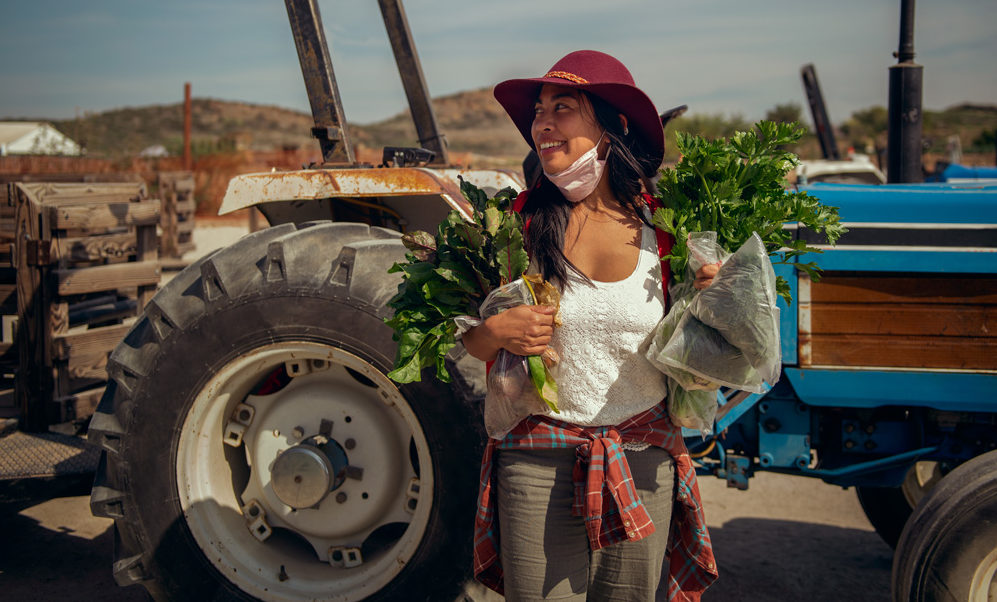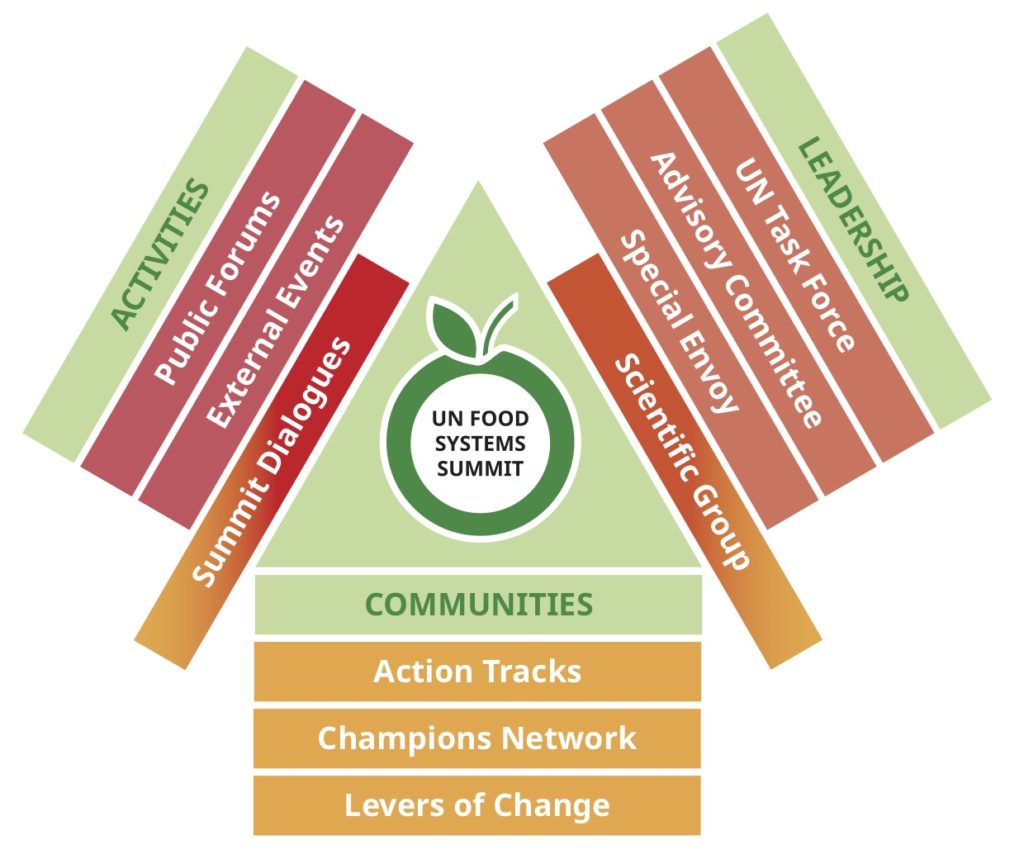Across the globe, private, public, and civil society actors are getting ready for the upcoming United Nations Food Systems Summit 2021, planned to take place in New York in September, preceded by a Pre-Summit in Rome in July. Ahead of the Summit, working groups have been formed across the globe, and events are taking place, including seminars, forums and dialogues, which will provide the basis for the discussions at the Summit. These events bring together people of diverse backgrounds and with a wide array of experiences to engage in the discussion about what needs to be done to ensure healthier, more sustainable, and more equitable food systems for all.
If you have looked at the Food System Summit process, you might have realised that it is a rather complex web of components. How are these components connected? What role will they play in the Summit? More so, how can you get involved? This article aims to answer these questions by describing the structure of the Summit’s interface. Additionally, the article points out how you and your organisation can get involved in your region and how to contribute to the Summit on a more general front.
Overarching categorical structure
The Summit will contribute to the implementation of the 2030 Sustainable Development Goals (SDGs) and is nested under the Decade of Action. The Summit is guided by its seven Principles of Engagement; 1. Act with urgency, 2. Commit to the Summit, 3. Be respectful, 4. Recognise complexity, 5. Embrace multi-stakeholder inclusivity, 6. Complement the work of others, and 7. Build trust.
The Summit’s components can be organised into three major categories, in accordance with the information found on the official UN Food Systems Summit (FSS) website. These are as follows: Leadership, Communities, and Activities. The outputs from the working groups and other engagements are classified between, and sometimes across these categories.
The Leadership consists of working groups that help move the Summit toward its vision. The Communities include a wide array of actors, engagements, and overarching themes, which have different purposes. On the UN FSS website, each of these Communities has a public discussion platform. The Activities component includes planned events that people can partake to contribute to the UN FSS process and to the transformation of our food systems in general.
The overall structure of the Leadership, Communities, and Activities components is summarised in the diagram below.

